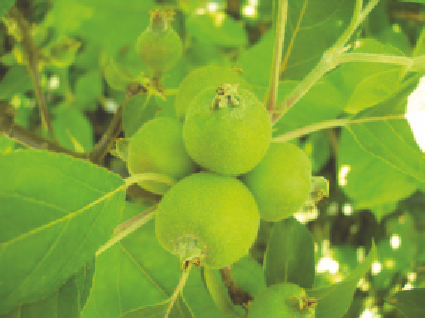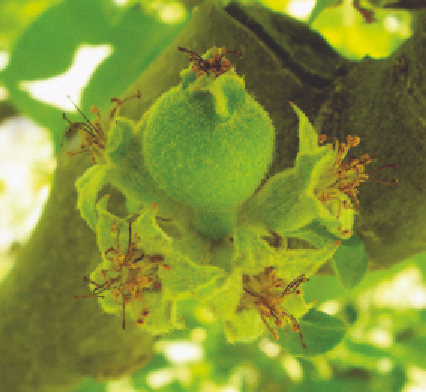Agriculture Reference
In-Depth Information
Figure 6.4
For the largest apples, remove all the fruitlets
except the central 'king' apple.
Generally this phenomenon is just annoying;
however, in some organic systems it is an
actual plan. If there is a persistent pest or
disease problem, the absence of a yearly
crop can reduce the pest/diseases hosted by
the fruit. This can make their control
much easier.
Figure 6.5
For medium-sized apples, and to reduce the
chance of pests and diseases, remove the central apple
and leave two on the extreme sides of the cluster.
blossoms will be pollinated and the decision
is made for you (see Figure 6.6).
A bumper crop should result (see Figure 6.7).
If the aim is to grow the largest fruit possible
remove all the fruitlets except the central or
'king' fruit (see Figure 6.4).
This can feel like the murder of the
innocents, but it ensures large fruit and
reduces stress on the tree. If a medium-sized
apple is desired, allow two fruitlets to remain.
The major drawback to this strategy is that as
the apples develop, there is little air
circulation around them and a site for pests
and diseases is created. Removing the central
fruitlet and retaining two side fruit can
reduce this problem (see Figure 6.5).
If the tree is kept open to the light and is well
fed and watered, pests and diseases are kept
to a minimum. In some cases only one of the
Figure 6.6
Sometimes only one apple in a cluster is
pollinated so the choice is made for you.



